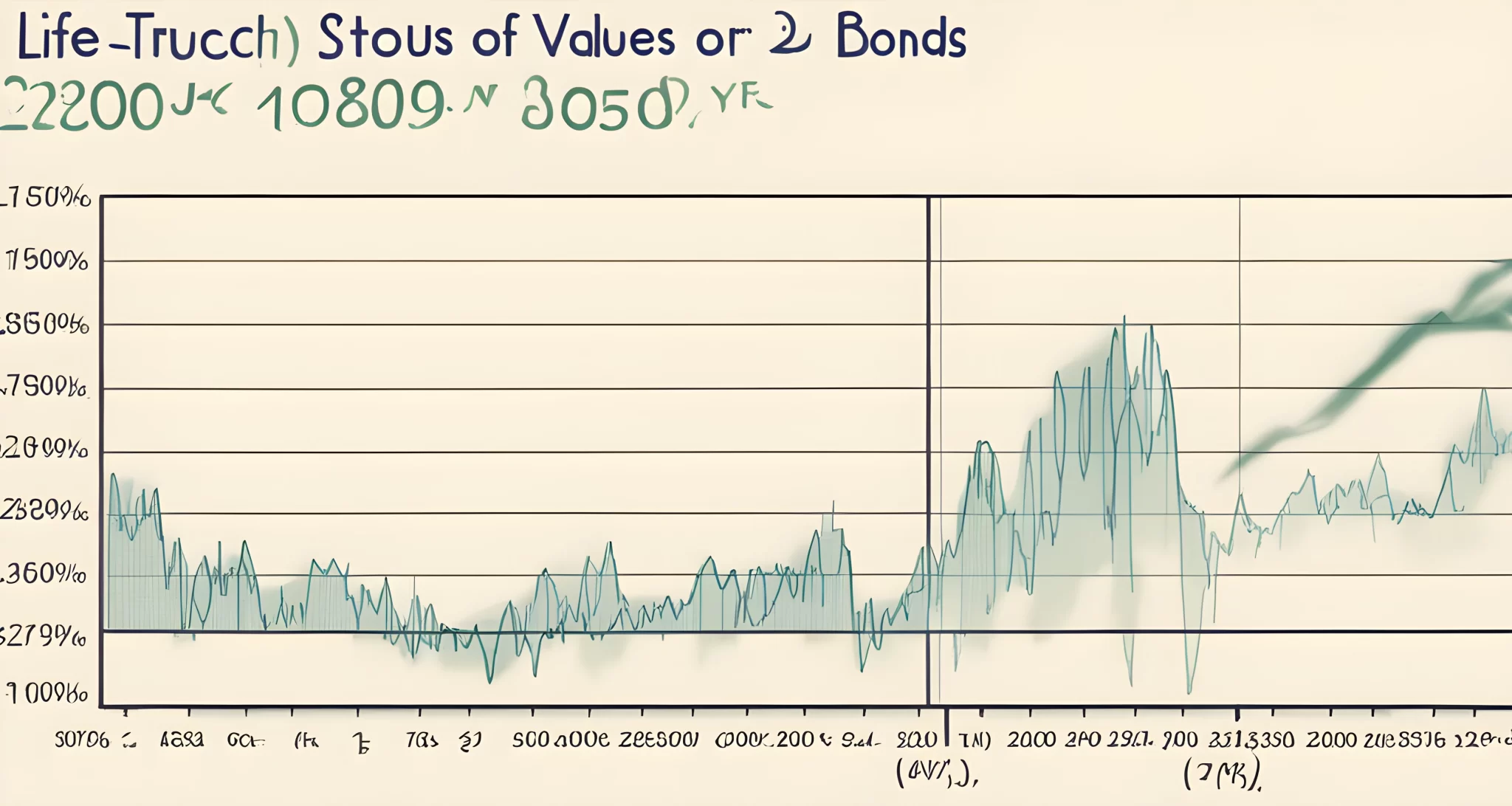The Importance of Diversifying Your Portfolio
Diversifying your portfolio is a crucial investment strategy, especially for retirees, as it helps to manage risk and potentially increase returns. A diversified portfolio consists of various investments, such as stocks from different industries, countries, and risk profiles, bonds, commodities, and real estate. The goal is to own a wide range of high-quality companies and asset types that can counteract each other’s performance in different market conditions.
Managing Risk and Increasing Returns
Diversification is essential for retirement portfolios, as it can help maintain stable and reliable investment returns. By spreading investments across different asset classes, retirees can reduce the impact of market volatility on their overall portfolio. This means that if one sector or asset class underperforms, the impact on the entire portfolio may be mitigated by the performance of other assets. Retirees can potentially increase their returns by including assets with different return profiles in their portfolios.
Importance for Managing Risk
It is also crucial for managing risk, as stocks, bonds, and other investments still carry the risk of losing money in certain market and economic conditions. By diversifying across different asset classes and geographical regions, retirees can reduce the overall risk of their portfolio. This means that even if one area experiences a downturn, the entire portfolio may not be significantly impacted.
Diversification for Retirement Portfolios
Retirees should pay special attention to diversification in their investment portfolios. As they rely on these investments to fund their retirement lifestyle, preserving capital becomes increasingly important. Including a mix of stocks from different industries and countries Diversify your investment portfolio, bonds, commodities, and real estate can help retirees achieve balance and stability in their portfolios.
In conclusion, diversifying your portfolio is a fundamental strategy for managing risk and increasing potential returns. Retirees should carefully consider diversification when constructing their investment portfolios to ensure they are well-positioned to weather various market conditions and achieve their retirement goals.

Building a Diversified Portfolio
Building a diversified portfolio is crucial for investors looking to achieve stability and reliable returns in their retirement portfolios. By owning stocks from various sectors such as tech, energy, healthcare, and others, investors can spread their risk across different industries. This can help protect their investments from industry-specific downturns that may affect only one sector.
In addition to diversifying across sectors, investors should also consider owning a mix of large-cap, small-cap, dividend, growth, and value stocks. Each type of stock offers different benefits and risks, so having a mix of these can help balance the overall risk in the portfolio.
Non-stock diversification options should also be considered. These options include bonds, CDs, gold, cryptocurrencies, and real estate. Each of these asset classes behaves differently in various market conditions, providing additional diversification and helping to reduce overall portfolio risk.
Diversification is essential for retirement portfolios as it can help maintain stable and reliable investment returns. By owning a wide range of high-quality companies and asset types that counteract each other’s performance in different market conditions, investors can mitigate the impact of market volatility on their retirement savings.
While diversification is crucial for managing risk, it’s important to note that it does not eliminate risk entirely. All investments carry some level of risk, and it’s essential for investors to regularly assess their portfolio’s performance and make adjustments as needed.
To further understand the impact of inflation on investment returns, consider reading our article on Inflation’s impact on returns. Understanding how inflation can affect investment returns is essential for building a well-diversified portfolio that can withstand the test of time.
By incorporating a diverse range of assets into their portfolios, retirees can enhance the potential for long-term growth while managing risk effectively.

Balancing Stocks and Bonds
Investors should aim for a balance between stocks and bonds to ensure a well-rounded and diversified portfolio. This is especially important for retirees who are looking to maintain stable and reliable investment returns.
Allocation for Different Age Groups
For younger investors, a higher allocation to stocks is recommended, as they have a longer time horizon to ride out market fluctuations and benefit from the potential growth of stocks. On the other hand, older investors should consider a higher allocation to bonds, which are generally considered less volatile and provide a steady income stream.
Importance of Diversification
In addition to stocks and bonds, retirees should also consider investing in low-correlated assets such as alternative investments like precious metals, derivatives, and real estate. These assets can help reduce overall portfolio volatility and provide additional sources of income. Diversification is crucial for retirement portfolios, as it can help counteract each other’s performance in different market conditions.
Managing Risk
It’s important to note that while diversification is essential for managing risk, it does not eliminate risk entirely. Stocks, bonds, and other investments still carry the risk of losing money in certain market and economic conditions. However, by owning a wide range of high-quality companies and asset types, retirees can better manage their overall risk exposure.
Consider Market Fluctuations
Retirees should also consider strategies for market fluctuations to further protect their investment portfolio. This may include implementing hedging strategies or considering investments that perform well in different market conditions. For more information on this topic, check out this article on Strategies for market fluctuations.
In conclusion, finding the right balance between stocks and bonds is crucial for retirees looking to maintain stable and reliable investment returns. By diversifying their portfolio with low-correlated assets and considering strategies for market fluctuations, retirees can better manage their overall risk exposure and maximize their investment potential.

Investing in Low-Correlated Assets
When it comes to building a diversified portfolio, it’s important to consider investing in low-correlated assets. This means looking beyond traditional stocks and bonds and exploring alternative investments that have the potential to perform differently under various market conditions.
One way to achieve this is by considering alternative investments such as precious metals, derivatives, and real estate. These assets often have a low correlation with traditional stocks and bonds, which can help reduce overall portfolio volatility. By including these assets in your investment strategy, you can improve the risk-adjusted returns of your portfolio.
It’s essential to remember that the goal of investing in low-correlated assets is not to eliminate risk entirely, but rather to manage and mitigate it. By owning a wide range of high-quality companies and asset types that can counteract each other’s performance in different market conditions, you can potentially reduce the impact of market volatility on your overall portfolio.
For retirees, in particular, investing in low-correlated assets can be beneficial as they seek stable and reliable investment returns. With a higher allocation to bonds in their portfolio, adding low-correlated assets can help maintain a balance between risk and return. Retirees may also want to consider the advice provided in the article Navigating market risk factors, as it offers valuable insights into managing risk in a volatile market.
In conclusion, diversification is essential for retirement portfolios, and investing in low-correlated assets is a key component of building a well-rounded investment strategy. By considering alternative investments and exploring opportunities beyond traditional stocks and bonds, retirees can work towards achieving a balanced and resilient portfolio that can weather different market conditions.

Diversification for Retirement Portfolios
Diversification is essential for retirement portfolios, as it can help maintain stable and reliable investment returns. It is also crucial for managing risk, as stocks, bonds, and other investments still carry the risk of losing money in certain market and economic conditions. However, diversification does not eliminate risk entirely.
One way to diversify a retirement portfolio is by investing in low-correlated assets, such as alternative investments like precious metals, derivatives, and real estate. These assets can help reduce overall portfolio volatility and provide a hedge against market downturns. Consider exploring opportunities to invest in these assets to further diversify your retirement portfolio.
Another important aspect of diversification for retirement portfolios is balancing the allocation between stocks and bonds. For younger investors, a higher allocation to stocks may be appropriate, as they have more time to recover from any market downturns. On the other hand, older investors may benefit from a higher allocation to bonds to reduce the overall risk in their portfolio.
The goal of diversification for retirement portfolios is to own a wide range of high-quality companies and asset types that can counteract each other’s performance in different market conditions. This approach can help mitigate the impact of market volatility and economic uncertainty on your retirement savings.
In conclusion, diversification is an essential strategy for retirement portfolios. By investing in a mix of assets with different risk and return profiles, retirees can help maintain stable and reliable investment returns while managing risk. Consider exploring opportunities to invest in low-correlated assets and balancing the allocation between stocks and bonds to further diversify your retirement portfolio.
For more information on maximizing investment returns in your portfolio, check out Portfolio investment maximize returns.
FAQ
Why is diversifying your portfolio important?
Diversifying your portfolio is crucial as it helps to manage risk and potentially increase returns. by owning a wide range of high-quality companies and asset types, you can counteract each other’s performance in different market conditions.
What investments should be included in a diversified portfolio?
A diversified portfolio should consist of various investments, including stocks from different industries, countries, and risk profiles, as well as bonds, commodities, and real estate. non-stock diversification options include bonds, cds, gold, cryptocurrencies, and real estate.
How should the allocation between stocks and bonds be determined?
Investors should aim for a balance between stocks and bonds, with a higher allocation to stocks for younger investors and a higher allocation to bonds for older investors. additionally, consider investing in low-correlated assets, such as alternative investments like precious metals, derivatives, and real estate, to reduce overall portfolio volatility.
Why is diversification essential for retirement portfolios?
Diversification is essential for retirement portfolios as it can help maintain stable and reliable investment returns. it is also crucial for managing risk, as diversification helps to reduce the risk of losing money in certain market and economic conditions, although it does not eliminate risk entirely.
